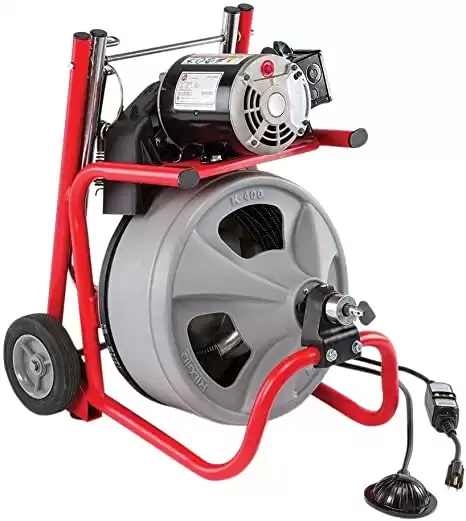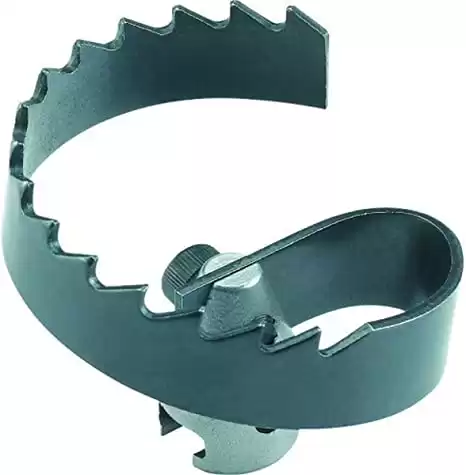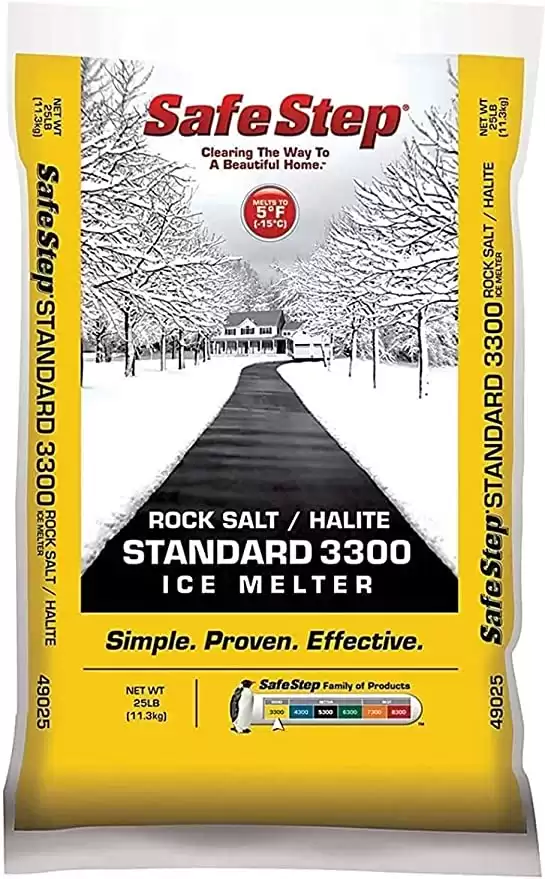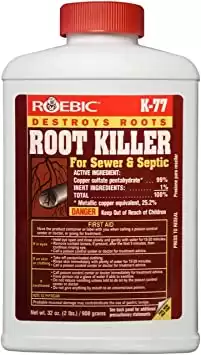Trees are beautiful, right? They’re nature’s gift and great for the environment. But they can also create quite a mess in your sewer pipes. Tree root damage is one of the most common plumbing problems that homeowners face today.
In fact, the average home has at least one pipe with tree root infiltration. When tree roots grow in and around your pipes, they can cause significant damage that could lead to costly repairs or even replacement. And because most trees are planted near houses, you’re likely to have a problem sooner rather than later…unless you take action today!
We’ll teach you about common symptoms of tree root invasion as well as how to identify where these invaders might be hiding so that you know exactly what needs fixing before suffering from a tree root catastrophe!
Why Do Tree Roots Grow Towards Sewer Pipes?
Trees are very thirsty! In winter and drought conditions, tree roots travel long distances in search of water. As a rule, tree roots will extend up to 2.5 times the height of the tree, and some species of trees may have roots extending five to seven times the height of the tree, woah!
Roots grow towards sewer pipes because they hold water, nutrients, and oxygen—things that tree roots crave. And if the root finds a crack or leak in the pipe, they’ll creep in the pipe wall and grow into the pipe, blocking off the flow of waste into the sewer. This can be a problem for homeowners since sewage backups are not just disgusting but also expensive to clean up.
When you have tree roots near your home’s sewers: roots will start growing in and around your pipes causing blockages that lead to unsanitary build-ups of sewage which can cost homeowners thousands of dollars to repair!
How Do You Know If You Have Tree Roots In Your Sewer Line?
Small leaks create humidity that attracts roots, causing them to enter the pipe and grow, slowly expanding and filling the pipe until it’s completely blocked. Left unattended, root obstruction can quickly become a serious problem, threatening the structural integrity of your sewer system and property. Here are some signs to watch for:
Slow Drains
Having slow-flowing drains is often the first sign of root damage. If you flush your toilet and it drains very slowly or you hear a gurgling noise, there’s a good chance roots have entered your pipes. Note: The risk is especially high in older homes or properties with large trees nearby!
Sinkholes
One of the most obvious signs of pipe damage is a sinkhole in your lawn. Sinkholes may start out as excessive wet patches in your lawn or elevated levels of standing water after it rains.
If you notice a hole, stay away from it and call your plumber immediately to fix the issue! Sinkholes are never good news. They’re not just a nuisance for homeowners; they can damage foundations and be hazardous to nearby pedestrians. Don’t take chances with sinkholes by ignoring them or trying to guess what’s wrong on your own.
Sewer Backups
Toilet backups are always a huge inconvenience. While they may be caused by something that the kids flushed down the toilet, it’s not likely to go away without professional help. This is because root obstruction is one of the leading causes of blocked or collapsed pipes, and will require more than just plunging to unblock them.
Bad Odours
When you smell a terrible odor, such as the scent of rotten eggs, it could be time to check for roots in your plumbing. Tree roots are known to damage sewer lines and lead to unpleasant odors inside and outside your home. If this is happening to you, there might be a serious blockage affecting your plumbing system that needs immediate attention.
How Do Tree Roots Damage Sewer Lines?
Once tree roots have infiltrated your sewer pipe they will start to grow thicker and branch out, thanks to all the free “fertilizer” inside your plumbing. The tree roots will grow in size if left undisturbed and will eventually catch larger pieces of waste like toilet paper and create clogs in your sewer line.
Stubborn clogs and sewer backups become a common problem when tree roots invade pipes. Rootballs grow inside the pipes to the outside, filling in every nook and cranny with hair-like root masses that are soon gunked up with human waste, TP, and grease, yuk! This thick root mass often leads to frequent clogging and sewage backups.
Finally, the roots grow and exert significant force on the sewer pipe at the cracks and joints where they entered. The pressure from root growth can break plumbing pipes and lead to a complete collapse of your sewer pipeline! The resulting damage to your plumbing can result in some expensive repairs or replacement.
How Much Does It Cost To Remove Roots From Sewer Line?
Clearing a clogged drain or main sewer line can cost you between $200 and $300. Real nasty clogs and get more expensive and cost upwards of $1,000.
On average clearing out tree roots from your sewer line will run you anywhere between $100 to $600. If you’re looking at having that same sewer line repaired expect to pay anywhere between $50 to $250 per foot of plumbing pipe that needs to be repaired.
The cost associated with repairing your cracked or collapsed sewer line will depend on how badly your plumbing is damaged and the materials your plumbing is made from.
To have your plumbing inspected with a camera to check for tree roots, expect to pay a few hundred dollars depending on how many plumbing pipes get inspected and if you get to keep any images or video taken during the inspection.
All of this may sound expensive but it is a small price to pay compared to having your main sewer line replaced. Paying for trenching and excavating your lawn, plus the potential for driveway and landscape restorations, and water damage to your property all add up quickly.
A complete sewer line replacement can easily cost over $10,000 when you factor in all of the project and clean-up expenses, yikes! It’s easy to see that taking care of your tree roots early is best for your home and wallet.
How To Get Rid Of Roots In A Sewer Line
The most important thing to remember when tackling tree roots is that you must be diligent, as they can get worse over time. There are several different tree-tment options depending on your skill level and budget.
For those more experienced with plumbing work, a root cutter may be the solution for you; while those who don’t have much experience might want to consider using a chemical drain cleaner.
Cutting Tree Roots Out Of Sewer Line
For those more competent with drain cleaning, a root cutter may be the solution for you; while those who don’t have much experience might want to consider renting a sewer cleaning machine or hiring a licensed drain cleaner for this task.
The solution for hassle-free Drain Cleaning
Ideal for drain cleaners, service plumbers, maintenance departments and property management companies, the RIDGID K-400 Drain Cleaner is a reliable and high-performance machine.
A sewer machine is used to cut the roots out of a sewer line. The drain cleaning machine is attached to a cable that sends a special root cutting head down your plumbing pipes, chopping out tree roots and removing any gunk that has accumulated in the pipe.
The best drain cleaning head for main sewers blocked by roots, leaf debris, sticks, sawdust, cloth, and sacking.
Depending on how many roots have grown in there, you might need to flush away the remaining debris after it has been chopped up and pulled out of your sewer line.
In very extreme cases, the sewer pipe is so thickly infested with tree roots that even a sewer machine can’t cut them out. In these situations, the pipe has to be exposed, cut out and replaced. This is rare but sometimes necessary.
Chemical Treatment For Tree Roots
Chemical root killers are a very cost-effective way to get rid of tree roots. They work even better as a part of a preventative maintenance routine to stop tree roots in their tracks and keep them from coming back!
Rock salt is commonly used by flushing a cup of rock salt in your toilet once a month. It’s important that the rock salt is completely dissolved to prevent clumps and blockages. The only drawback with using rock salt is it doesn’t stay around inside your sewer very long.
Foaming root cleaners, on the other hand, cling to pipe walls and any tree roots inside your pipe to effectively kill the invading roots. And some chemicals will help you control a tree root problem without affecting the health of your trees!
Read The Label
Avoid root-killing chemicals that contain Copper Sulfate. Copper sulfate can kill bacteria so it is not safe for septic systems.
We have our in-depth guide top picks for chemical root treatment below!
Sewer Pipe Replacement
If you can’t keep your tree root problem under control with chemicals and drain cleaning equipment aren’t cutting it, you are looking at having to replace your sewer pipe.
But don’t freak out just yet. There are several “trenchless” sewer repair methods available that don’t require extensive excavation.
Call a sewer repair professional to explore all your options before you start digging up your lawn.
How To Keep Tree Roots Out Of Your Sewer Line
Don’t be a sap when it comes to trees invading your sewage system. Here are the best ways to keep tree roots out of your home’s sewer.
Cleaning and inspecting your sewer lines is one of the easiest ways to avoid major repairs and prevent a messy disaster. Regularly inspecting the pipes can help you recognize any signs of weakness before it’s too late, like if tree roots have penetrated your sewer line. If you find any, clear them out immediately or call an experienced professional for help.
Look deep into plumbing pipes and drains!
Excellent for inspection in pipes or areas which are not viewable by the naked eye.
Flexing your green thumb can also keep your plumbing running smoothly! If you want to get the most life out of your plants and avoid costly maintenance, then it’s important to be smart about how you plan your landscaping.
The best way to do this is by limiting the number of plants that are close to sewer lines. If these pipes need repair, they can cause a lot of damage if trees are too close. To avoid this problem, plant larger trees far enough away from sewer lines so the roots are not within reach of your pipes.
What Trees Are The Best And Worst For Sewer Lines
Trees and shrubs increase your home’s curb appeal and you can improve your property without creating problems for your plumbing! As a landscaping rule, you’ll want to plant trees with non-invasive root systems and keep these trees at least 10 to 15 feet away from your sewer lines.
If you decide to plant fast-growing trees with invasive roots keep them 10 feet from driveways, sidewalks, and patios. You will also want to plant these water-hungry trees 20 to 30 feet from sewer and waterlines as well as 25 to 50 feet from the foundation of your home.
Some small, slow-growing “sewer safe” trees include:
- Amur, Japanese, Paperbark, Southern Sugar, and Trident Maple
- Adams Crabapple
- Cherry, Flowering, and Kousa Dogwood
- Cypress Trees
- Fraser and Red Tip Photinia
- Fringetree
- Hollywood and Skyrocket Juniper
- Pawpaw
- Serviceberry Trees
Avoid planting these fast-growing trees near your sewer line at all costs:
- American Elm
- Aspen
- Cottonwood
- Hybrid Poplars
- River Birch
- Silver and Norway Maple
- Some species of Magnolia
- Sweetgum
- Sycamore
- Willows
The Best Sewer Line Root Killers
Treatment for tree roots in your sewer comes down to some basic chemis-tree, oh the tree puns!
Best Budget
Let’s start with chemicals you might already have around your home. If you live in a colder climate you’re probably already familiar with rock salt. Rock salt, also called Halite, is a mineral form of sodium chloride (Na Cl). Typically rock salt is white or colorless but it may have a colored hue depending on other minerals or impurities found in the salt crystals.
Not only is rock salt good at melting ice and keeping your sidewalks safe but it also works wonders as a homemade root killer in your sewer lines.
You can start by flushing a cup of rock salt in your toilet bowl. Ideally, you will want to do this at night so that the salty solution will stay in your pipes longer without getting washed away by other household water usage.
Repeat this rock salt treatment every month or so to kill and new tree roots in your sewer pipes. For problematic plumbing, slowly increase the quantity of rock salt and the frequency of doses to completely eradicate tree roots.
Be A Rock-Salt Rock-Star!
Rock salt has the potential to kill the tree itself and other plants in the area so take it slow and steady when trying to terminate tree roots.
Best Foaming
Getting to the root of your plumbing problem is easier with the help of a foaming root killer. The killer foaming action clings to your pipes and the tree roots providing more effective treatment that won’t quickly wash away.
This foaming root killer effectively eliminates tree roots and prevents regrowth when used to maintain your plumbing.
Best of all it does not contain copper sulfate so it septic-safe and won’t damage the tree itself if it’s used properly!
Get to the root of the problem!
Root Killer will dissolve the tree roots growing inside your pipes with foaming killer action! Will NOT damage the tree if used as directed!
Best Overall
Do you have a severe sewer root issue? If so, this Root Killer by Roebic is your ideal choice.
Roebic Root Killer is a powerful chemical that clears out existing root systems to clear your pipes, stopping new root formations in their tracks, freeing you from having to worry about your plumbing getting plugged up again!
The copper formula is non-corrosive and safe for all plumbing, including septic tanks. It will not harm surrounding trees or ground cover, or the natural bacteria content in septic tanks and cesspools.
Non-corrosive root killer is safe for all your plumbing pipes.
Roebic Root Killer clears existing roots and stops new growth fast from sewer and septic pipes, keeping lines free from clogging tree and shrub roots.
When To Call The Pros
If root-killing chemicals haven’t helped your situation, your sewer is completely plugged with roots, collapsed or broken parts of the line need to be repaired, or you notice problem areas in your lawn, call a plumbing professional immediately!
Conclusion
Don’t get stumped by tree roots in your sewer! We’ve shown you about common symptoms of tree root invasion as well as how to identify and treat these invaders so you can keep your plumbing flowing tree-rifically!
Happy Plumbing!
Recommended Reading
How To Flush A Water Heater
Flushing your water heater and discovering the schedule that keeps your hot water tank happy and healthy is easy. We will show you how!
How To Replace Your Water Heater’s Anode Rod
Nothing is worse than having to replace your water heater prematurely. But you can add years of life to your water heater by simply replacing its anode rod!
How To Winterize Your Sprinkler System And Prevent It From Freezing
We answer all your questions and show you 7 simple steps on how to blow out your sprinkler system and get it ready for winter!
How To Fix A Running Toilet The Right Way
A continually running toilet can cost you hundreds of dollars on your next water bill. Learn how to diagnose and fix a running toilet and save money!
The Ultimate Guide To Plumber’s Putty
Plumbers get all the fun with their own version of Play-Doh! Plumber's putty is waterproof and easy to use, we will show you how!
How To Choose The Best Kitchen Faucet
The kitchen is the heart of your home but a faulty faucet can cripple your household. We will show you which kitchen faucet is perfect for you!






